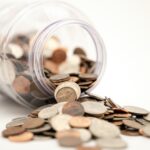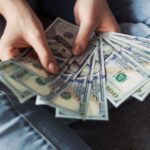Inflation is the unfortunate reputation of a struggling economy that can’t keep up with the rising prices of goods and services over a given period. Surprisingly, some also regard inflation as a measure of success. Usually, when inflation hits, consumers are forced to buy as many of the items they need and stock up on value stable items in anticipation of even more challenging conditions, which intermittently makes everything worse. Since more people purchase goods, the producers are forced to drive up prices to control the demand.
Inflation cripples the currency and weakens its purchasing power despite the rising prices. Remember Zimbabwe? Their currency became so weak that truckloads of currency notes were needed to buy assets. What used to cost a dollar goes as far as costing thousands of dollars; you’ll pay $10 more for pork chops than you did last year, filling up the tank at the gas pump can leave you penniless, the asking price of your dream home could bankrupt you now that its 30% higher than last year’s price, and the list goes on.
However, inflation is not a one-off or isolated price increase. It is a ripple effect type of increase where everything becomes overpriced, from groceries costing ten times as much as they did before to gas prices that make walking to work more affordable. People will force employers to increase their wages, and they, in turn, will drive up prices to allow them to keep up with the wage pressures and still make returns.
Measuring inflation
The items affected by inflation are part of a basket of goods and services whose changes are measured by the Consumer Price Index (CPI). The most common drivers of inflation are gas and food prices, but the two are more volatile than most, so they are taken off the calculations for a more core depiction of the inflation threat.
Higher rates of inflation affect the exchange rates of a countries’ currency. Since most countries import goods or services, if their currency succumbs to inflation and a weaker purchasing power, they have to pay more money for imports in their local currency.
How did we get here?
Washington has spent about $3 trillion in financial aid to families, unemployed workers, and dwindling businesses to cushion them from the pandemic effects, and there’s a lot more money on the way. $3 trillion is not a small amount by any means and thinking that all of it went into circulation, especially with interest rates being low, is worrying. With all that money, consumer spending is at an all-time high now that the economy is recovering. Businesses will reactively increase prices, and inflation wouldn’t be far from happening then.
Around April 2021, the CPI was at 4.2%, which was beyond expectations and global commodities costed much more than they did the same time last year. But it wasn’t localized to only the domestic economy; every economy worldwide was suffering. The spikes in prices around spring mainly were by our own hands as consumers; we had much cash to burn and more where that came from. We were aching to leave our concrete prisons and go out to our favorite joints from before the pandemic, the raises were finally here, and supply chains couldn’t keep up with the current demand.
People celebrate having money, but prices can far outpace the stimulus checks, and interest rates are equally high. Bonds will boom, but stocks will plummet, which will choke growth in an economy reeling from the recession it just survived.
Getting things under control
The Fed has enjoyed stable inflation over the past decade, but the current trend hints at a possible 3% at the start of next year, complicating things for the central bank. The Fed and the central bank will have to consider raising interest rates to regain some control over the spreading inflation panic that would ensue.
The reduced flow of credit and the slowing down of spending will result in the interest rakes hiking to reduce prices. A recession will, however, occur if congress cuts the spending, which will lead to unemployment and reduced wages. This would come at a time when businesses are struggling to get skilled labor as people lack the incentive to go to work because there’s a lot left from stimulus packages and the logistics part is still a bit shaky in some industries. But as the packages come to an end, the labor force could bounce back. This would, however, in return, threaten short-term wage inflation.

Learning from the past
While inflation affected the country’s economy heavily in the 1900s, today’s economic trends have changed the game. When local economic conditions become unbearable, companies can swiftly relocate their operations to other countries where the production and labor costs are more favorable. Consumers, on the other hand, have the biggest advantage. They have access to several eCommerce retailing options that free them from having to buy from local stores. They can simply log into a site, find the best, most reasonable prices, and order from there.
The Feds promote the narrative that the current spikes are nothing more than a short-term mismatch between demand and supply and that they are just growing pains from the economy as it recovers from the pandemic recession.
Enter the panic…
If the current trends are not a passing phase and inflation is incoming, what happens next will be even worse. Inflation economic expectation will come from past experiences as people try to accept the conditions. This means people will expect the dollar to lose its value quickly over the following months. This makes them buy a lot more and spend all their money before it’s useless. This sets off a condition with lots of money but too few goods and begins another inflation feedback loop.
The next is a rise in inflationary expectations that will force people to spend instead of saving. This uncontrolled spending causes price increases which also reach the labor market. Workers will look for leverage to renegotiate wage increases making employers raise prices. The workers are left with nothing but a vicious cycle of spending and inflation, which destabilizes the economy.
Housing and rent prices are also threatened, especially with prices of building raw materials going up because of the supply chain disruption. People are more likely to rent than build, but the landlords will most likely increase the prices. If prices increase, consumers and workers will request more dollars on their wages, offsetting yet another price hike spiral.
When inflation goes beyond the mark, the Federal Reserve will have to increase interest rates, which will curb the overborrowing but punish the borrowers. Items and services will become too pricey because people can’t borrow any more.
The reality of inflation
Inflation can either be cost-push or demand-pull depending on what fuels it, whether the demand of goods with excess money in circulation or oversupply with reduced consumer expenditure. Whichever form of inflation hits, consumers can always expect to buy normal commodities at unprecedented prices or witness very low prices that have them guessing whether to purchase or hold off. However, investors can make money from inflation by investing in profitable securities and bonds that thrive in high-interest rates.
This post was written with Willy Wallace on Fiverr. I hire Fiverr writers who are experts in areas I’m not. I hope you find these posts helpful.
It’s not a time to panic. I’ve found that the best thing to do when everyone is scrambling around is to wait, be patient and watch. Do lots of research on how to make money during inflationary times and save what you need. Live on less, invest in inflation proof assets and enjoy your loved ones. Don’t panic, it takes time, but has always worked out in the past so it likely will work out again. There are many examples of people who made their wealth during inflationary times.
Subscribe for more business, sales and investing posts. Have a lovely day.











